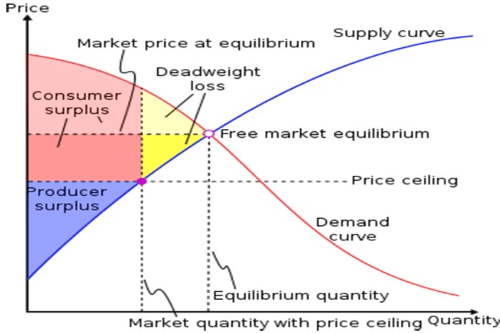Price Floor Implications in Economics – Definition and Examples. When law set a base price, it is called Price Floor implications. We can set a price on or above the Price floor but not below that.
Price Floor Implications in Economics; Definition, and Examples:
People ask for a price above equilibrium when they feel that the market is not paying them for what they are providing to the market.
There are two cases, one is Upheld prices for rural items and the other is current least wages.
Graphical Representation of Price Floor Implications:
Suppose industrial workers have very low wages when the price of Oil is at its balance estimation of $2 per barrel.
The management chooses to approve price floor or price support of $3 per barrel.

What will be the impacts?
Any price over the equilibrium price will surpass the amount requested.
This indicates that there might be a constant oversupply or excess of the item.
Ranchers will deliver and offer available to be purchased more than private purchasers will buy at the price floor. Like a price ceiling, a forced lawful price disturbs the apportioning capacity of the free market.
See Also: What is Price Ceiling in Economics and Its Implications.
How does the Government respond?
The government may accept surplus coming because of a price floor in two ways:
(1): It can limit supply. For Example, by founding electrical based items by which workers consent to take a specific measure of work out of payment. Or increment request, for example, by finding ways for new uses.
This may decrease the difference between the constant price and the price floor and it will reduce the extent of the subsequent excess.
(2): If these activities are not very helpful then management must buy the surplus yield at the $3 price and store or cut off it entirely.
Minimum Wage – A Perfect Example of Price Floor:
In the case of price workers are the distributor of services and the organization is the customer.
Joblessness is made (a large number of people are searching for occupations) when the minimum wage is set over the balance for incompetent work.
Over the normal equilibrium wage would initiate managers to hire fewer individuals and also enable more individuals to do more work which results in a surplus measure of work accessible.
At this point, workers would have higher wages. The equilibrium wage for specialists would depend upon their Skills, Knowledge, Experience and economic environments.
The price floor model makes situations that may not actually exist.
Joblessness in Pakistan is expected to reach 5.5% at the end of the Year 2020.
Implications of Price Floor:
As you may have seen, this may cause
There is less amount requested than the amount provided. This is known as an overflow.
If the surplus is allowed in the market then the price will go under equilibrium.
To follow the law keeping the price control then,
(1): They can purchase up all the excess.
(2): They can authorize the price floor and let waste the surplus. This makes the providers auction their products while the individuals who can’t offer theirs (Lack of interest) will be more awful off.
(3): The law can control the amount. To keep a varying number of providers from delivering, the law can give generation rights or pay individuals not to create.
(4): They can motivate utilization. For this purpose buyers to buy a greater amount of the overflow, the law can pay some portion of the expenses. This would clearly get costly truly quick.
So, the Price floor needs to be chosen wisely so that the price floor does more benefit than a loss in each case.






















